|
Finding
the Real Oz
A Conversation with Evan I. Schwartz
An unusual
biography of
L. Frank Baum's life before The
Wonderful Wizard of Oz will
be available in late April,
2009. Inspired by reading the book as an adult, Evan I. Schwartz
decided to investigate the "man behind the curtain". I talked
with Evan about Baum's amazingly
varied career and the age in which he
lived...
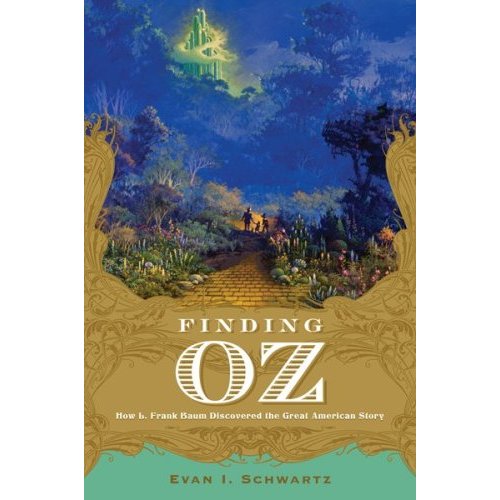 WW: Baum was a entrepreneur in every sense of he
word, yet
he failed at many of his attempts to start businesses. What do
you think
kept him going through the hard times? WW: Baum was a entrepreneur in every sense of he
word, yet
he failed at many of his attempts to start businesses. What do
you think
kept him going through the hard times?
EIS: In
many ways, Baum was just an ordinary man
trying to support his family as best he could. So he was largely
motivated by
survival, because times were indeed tough and there was really no
social safety
net like today. But deep down, I think his faith kept him going. Faith
in the
future. Faith in America.
And learning through experience where not to place his faith.
He knew he
had a special talent but he was often misapplying it, in order to make
a living.
His faith kept him on a path to his True Self, just like the characters
in his
story. If you can make it though the darkness and fear and re-discover
your Self,
you can achieve bliss in this life. That is what great mythology
teaches us.
And Frank Baum not only wrote it, he lived it. That is what Finding
Oz is about.
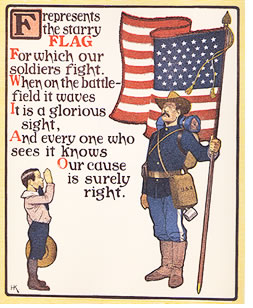 WW: Baum
was ever the showman, do you think he
was trying
to make up for his shortcomings as a child? (Not following in his
families footsteps, dropping out of military academy, poor health). WW: Baum
was ever the showman, do you think he
was trying
to make up for his shortcomings as a child? (Not following in his
families footsteps, dropping out of military academy, poor health).
EIS: I do think the whole episode of dropping out
of the
military academy as a young teen has a lasting, traumatic impact on
him. I
think he did struggle to compensate for that, in a way, which I explore
in the
book.
WW: Baum started writing in
his teens; what do you
consider his "golden years'?
EIS: He
wrote many witty and whimsical and wonderful
pieces over a long period of time. I especially enjoy his “Our
Landlady”
columns from his Dakota days. But if he had “golden years,” they were
short.
I’d say they began around 1896, with his first published children’s
book, Mother
Goose in Prose, and they may have lasted mid-way through the
fourteen-book Oz
series. The problem is that he was writing too many books too quickly,
and the
quality suffered. Most of his works don’t seem to come from the same
place of
inspiration as the first Oz novel.
The original story came about in a
singular,
transcendental moment—the likes of which he may never have experienced
again.
WW: How do Baum's other works tie into what he
was writing
in the Wonderful Wizard of Oz?
Did he expand on his beliefs and
motivations
through other works? If so, which ones?
EIS: He
did expand on his themes and beliefs and
many, many other things. But he never went back to re-read his own
prior books
and he rarely edited what he wrote, so things in his later books go off
in
endless directions. That’s why I didn’t even try to make sense of it
all.
Mostly, he was just having fun and earning a living the way he wanted
to, as a
writer.
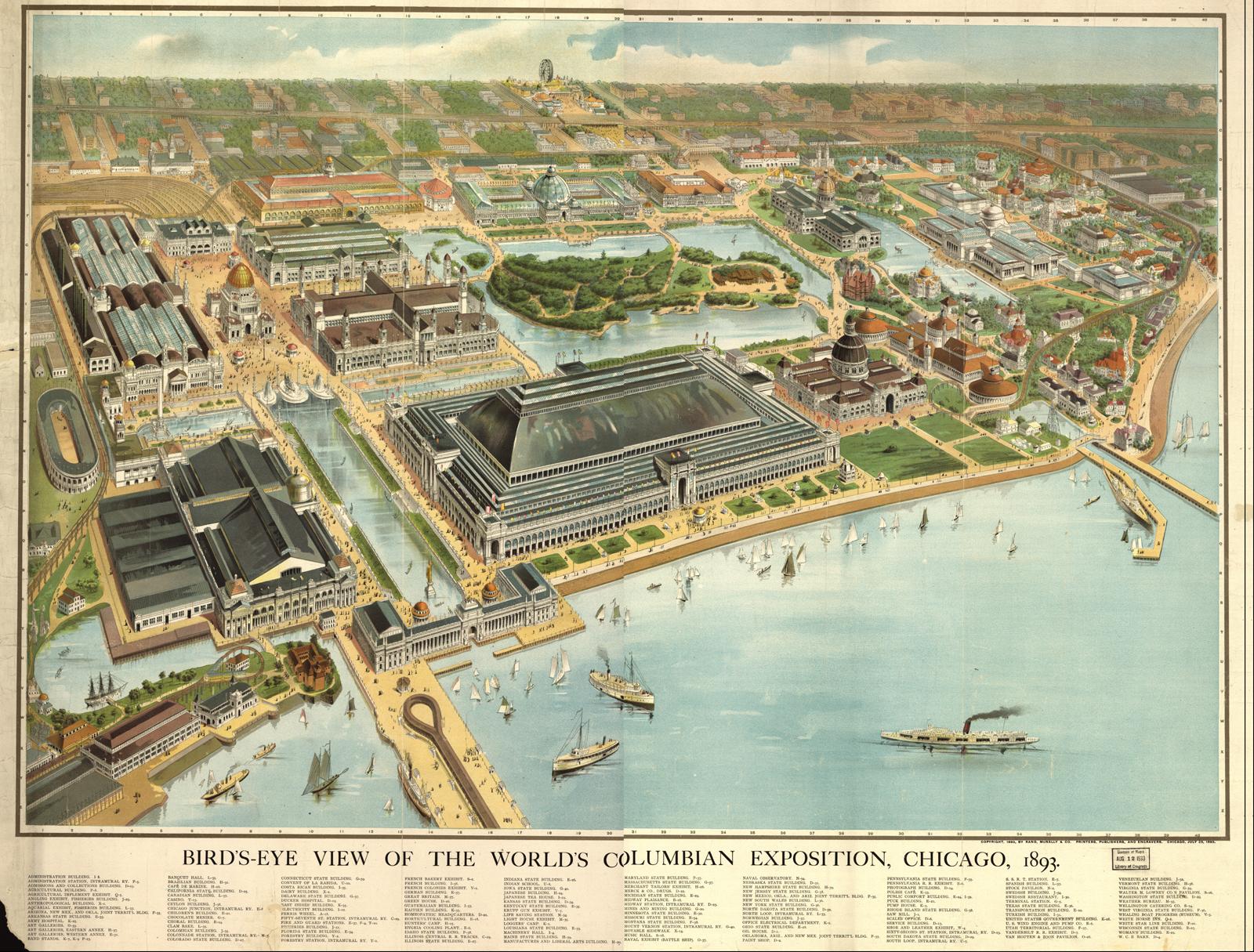 WW: When in
Chicago, Baum was a reporter for several
newspapers. Your research seems to indicate that he wrote several
pieces
that were uncredited. Do you think he could have made a career as
a
reporter, or are his pieces "hack writing"? WW: When in
Chicago, Baum was a reporter for several
newspapers. Your research seems to indicate that he wrote several
pieces
that were uncredited. Do you think he could have made a career as
a
reporter, or are his pieces "hack writing"?
EIS: He was never really a reporter. He wasn’t
good at
collecting factual information, and didn’t seem to interview people
very often.
He wasn’t a hack, though. He was a commentator. He was a humorist. He
used the
news as fodder for columns and poems and editorials. He would fit in
great
today, as an occasional contributor on NPR.
WW: We
literally find Oz references in all
areas of popular culture every
day. Why
do you think Oz has permeated
American culture so deeply?
EIS: Because The
Wizard of Oz taps into the
archetypes of the human mind. Baum was
able to
express basic impulses, such as yearning, fear, dread, hope, wonder,
determination,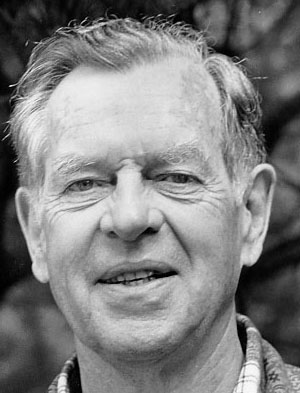 comfort.
He did it through
vivid characters and by infusing
meaning into concrete symbols, from the cyclone to the Yellow Brick Road
to the magic shoes to
the Emerald
City to
“home.” The MGM movie, of course,
propelled these icons to a whole new level. But it was Baum who
transformed
common sights into these mythic images. This is why I quote Joseph
Campbell
throughout the book. Although Campbell
never wrote about Oz, he unraveled
the workings of the mythic
imagination
better than anyone. comfort.
He did it through
vivid characters and by infusing
meaning into concrete symbols, from the cyclone to the Yellow Brick Road
to the magic shoes to
the Emerald
City to
“home.” The MGM movie, of course,
propelled these icons to a whole new level. But it was Baum who
transformed
common sights into these mythic images. This is why I quote Joseph
Campbell
throughout the book. Although Campbell
never wrote about Oz, he unraveled
the workings of the mythic
imagination
better than anyone.
WW: Theosophy plays heavily in your analysis of
Baum. When and where did Baum become interested in Theosophy and
Madame
Blavatsky?
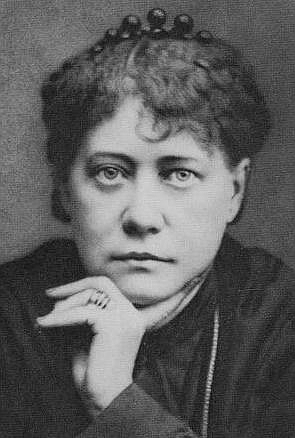 EIS: Baum’s mother-in-law joined the Theosophical
Society
around 1885, so Blavatsky’s literature was around him from at least
that point
on. Baum seemed to turn to this faith most dramatically during the
depths of
his despair, in his darkest days in Dakota, in 1890 and 1891. Frank and
his
wife Maud both joined the Society in 1892. But Theosophy itself was
largely
inspired by Hinduism and Buddhism, and he was also drawn to the
philosophies of
those ancient religions in these years too. The spiritual influences in
The
Wizard of Oz are subtle but
fundamental. EIS: Baum’s mother-in-law joined the Theosophical
Society
around 1885, so Blavatsky’s literature was around him from at least
that point
on. Baum seemed to turn to this faith most dramatically during the
depths of
his despair, in his darkest days in Dakota, in 1890 and 1891. Frank and
his
wife Maud both joined the Society in 1892. But Theosophy itself was
largely
inspired by Hinduism and Buddhism, and he was also drawn to the
philosophies of
those ancient religions in these years too. The spiritual influences in
The
Wizard of Oz are subtle but
fundamental.
WW: Your
research points to four giants of the late
19th century (Rockefeller, Edison, Barnum & Vivekananda) as
inspiration for
The Wizard of Oz. Tell us a
bit about Swami Vivekananda and how
Baum knew
of him.
EIS: Yes, Baum crossed paths with all of these
larger-than-life
figures, and I show how each inspired aspects of the shape-shifting
character
of the great and powerful Wizard himself. Swami Vivekananda’s own story
is
amazing. He was selected by the nation of India to introduce Hinduism
to the
West, at the World Parliament of Religions, part of the Chicago World’s
Fair of
1893. This, of course, is the fair that inspired Baum’s creation of the
Emerald
City.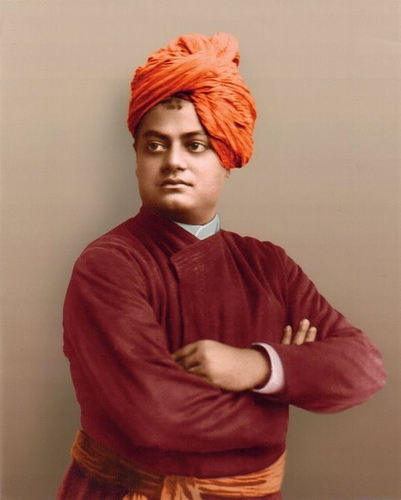
The Swami was the surprise sensation of the
entire
expo. Vivekananda preached a set of meditations called the “Four
Yogas,” describing
the four paths to the True Self: the path of wisdom, the path of
compassion,
the path of courage and the path of inner harmony. (I think we may know
four
characters who travel those very paths.) The Swami was a major presence
in Chicago
in the six years
after that too. His image and his words were everywhere. He even gave a
series
of lectures at the Fine Arts Building, where W.W. Denslow kept his
illustration
studio.
WW:
What are some of
the places you traveled for your research? What was your most
exciting
find?
EIS: I live in Connecticut,
and I drove about six or seven times to the Syracuse area for research. I also
traveled
to Aberdeen, South
Dakota
and to Los Angeles,
with a few other smaller excursions. But one of my most fun finds was
in Chicago.
Baum worked
briefly in 1891 as a reporter for The
Chicago Evening Post, but the paper carried no bylines. Buried in
the
microfilm, dated during that short stint, I found some curious
articles, with
trademark phrases, such as one about the philosophy of moving that
contains the
phrase “there’s no place like home” and a story about a Thomas Edison
press
conference, in which the reporter covering it writes that the Wizard of
Menlo
Park has a “massive head.” That was exciting. Here's another one: landscape architect Frederick Law
Olmsted,
in the months before the Chicago World’s Fair was to open, was
frantically
trying to change the dominant color of “The White City”….to green.
WW: There are several theories about how Baum
came up with
the name "Oz". What do you
believe?
 EIS: The origin the Oz
name remains a mystery. But
the
much-circulated story about the “O-Z”
file cabinet drawer probably
never
happened, as his wife Maud made that clear in a written interview she
gave.
Baum seemed to have made up that tale a few years after the fact in
order to
give reporters an answer that they would understand. Other theories are
more
plausible, and I discuss them in the book. For instance, Oz is a
Biblical word,
meaning “inner strength” in Hebrew. But the filing cabinet tale has
been
distracting, because it seems to suggest that the Land of Oz is just a
patch of
nonsense, rather than the highly meaningful place it is. EIS: The origin the Oz
name remains a mystery. But
the
much-circulated story about the “O-Z”
file cabinet drawer probably
never
happened, as his wife Maud made that clear in a written interview she
gave.
Baum seemed to have made up that tale a few years after the fact in
order to
give reporters an answer that they would understand. Other theories are
more
plausible, and I discuss them in the book. For instance, Oz is a
Biblical word,
meaning “inner strength” in Hebrew. But the filing cabinet tale has
been
distracting, because it seems to suggest that the Land of Oz is just a
patch of
nonsense, rather than the highly meaningful place it is.
WW: Where do you place L. Frank Baum in literary
history? Was he just a writer looking to make money, or do you
think he
had an agenda with his works?
EIS: He was no Fitzgerald or Hemingway, yet he
became one
of the best children’s authors of the 20th century,
influencing
everyone from Maurice Sendak to JRR Tolkien to J.K. Rowling. The
Wonderful Wizard of Oz really
was
the Harry Potter of its time, as
inspired as anything anyone ever wrote. Baum was looking to make money,
but so
were a lot of writers. I believe there was indeed an agenda other than
to
entertain children, but he concealed the story he was really telling
inside a
fantastic fable. He often used his stories to advance the agenda of his
late
mother-in-law, the women’s rights leader Matilda Joslyn Gage. 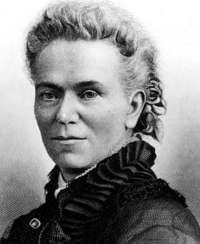 I
hope to show people where the great American
story came from, because it largely comes from our country’s great and
not-so-great history and Frank Baum’s particular path through it. I
also hope
to show people that there’s a deep reason why The Wizard
of Oz has captured our
collective imagination for more
than a century. This is a story that still helps guide our own lives
today.. I
hope to show people where the great American
story came from, because it largely comes from our country’s great and
not-so-great history and Frank Baum’s particular path through it. I
also hope
to show people that there’s a deep reason why The Wizard
of Oz has captured our
collective imagination for more
than a century. This is a story that still helps guide our own lives
today..
WW: Based on your research, why do you think Baum
wanted
to end the Oz series?
EIS: The Oz series
became a job for him, an
obligation to
his many fans. And they sometimes read like they were scattershot and
forced. Plus,
he had spent his whole life moving on to new things. He thought he
should do
the same with his stories. But the years after Baum’s first Oz novel
are barely
covered in my book. My whole focus is “finding
oz.”
WW: How
did you first "find Oz"? Was
it through the MGM film or the book
series?
EIS: My
very earliest memory is being scared out of
my wits by the Great and Powerful Oz,
the flying monkeys and the Wicked
Witch
of the West, in those annual showings on TV. I got hooked on Baum’s
first Oz
book later on. But it wasn’t until just a few years ago that the
journey of
“Finding Oz”
began for me. I was re-reading Baum’s novel, this time
aloud at
bedtime to my 7-year-old daughter. I was inspired by her reaction, but
I also wondered
how one man was able to invent so many cultural icons. How does someone
who
failed at so many different careers suddenly, in his early 40s (my age
too!),
come up with The Wizard of Oz?
What
did it mean to him? And why is it still so powerful to us?
WW: What
do you think Baum would think of what his story
has become today?
EIS: The Wizard of Oz was a big hit in his
lifetime, but
he couldn’t have imagined how amazing and successful the Judy Garland
movie
would be. He would have cried for joy. What else could he do after
learning
that his story has given so much pleasure to billions of people? Also,
I think
he’d be terribly jealous that he didn’t think of creating Wicked. ∆
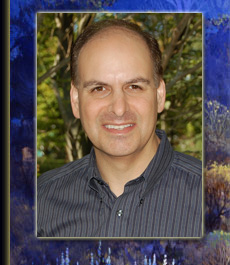 Evan
I. Schwartz
has written
books about invention and
creativity, most notably The Last
Lone Inventor, about television inventor Philo T. Farnsworth...and
JUICE, about the creative process of inventors. He lives
with his family in Connecticut. He will be promoting his book
at the Roxie Theatre in SanFrancisco on Apirl 9 & 11, 2009 with a
showing of the 1939 MGM film. Evan can be
reached through www.findingoz.com Evan
I. Schwartz
has written
books about invention and
creativity, most notably The Last
Lone Inventor, about television inventor Philo T. Farnsworth...and
JUICE, about the creative process of inventors. He lives
with his family in Connecticut. He will be promoting his book
at the Roxie Theatre in SanFrancisco on Apirl 9 & 11, 2009 with a
showing of the 1939 MGM film. Evan can be
reached through www.findingoz.com
Finding Oz:
How
L. Frank Baum Discovered the Great American Story is scheduled
for
publication on April 23, 2009 by Houghton Mifflin Harcourt.
Blair Frodelius lives in upstate New York and is the
editor of The
Daily Ozmapolitan and
OzProject.com. He can be reached at
blair@frodelius.com
--Interviewed by Blair Frodelius; March 6 & March 25, 2009
Home Again
|
|


 WW: Baum
was ever the showman, do you think he
was trying
to make up for his shortcomings as a child? (Not following in his
families footsteps, dropping out of military academy, poor health).
WW: Baum
was ever the showman, do you think he
was trying
to make up for his shortcomings as a child? (Not following in his
families footsteps, dropping out of military academy, poor health).
 WW: When in
Chicago, Baum was a reporter for several
newspapers. Your research seems to indicate that he wrote several
pieces
that were uncredited. Do you think he could have made a career as
a
reporter, or are his pieces "hack writing"?
WW: When in
Chicago, Baum was a reporter for several
newspapers. Your research seems to indicate that he wrote several
pieces
that were uncredited. Do you think he could have made a career as
a
reporter, or are his pieces "hack writing"?

 WW:
WW:  comfort.
He did it through
vivid characters and by infusing
meaning into concrete symbols, from the cyclone to the
comfort.
He did it through
vivid characters and by infusing
meaning into concrete symbols, from the cyclone to the  EIS:
EIS:
 EIS:
EIS:
 Evan
I. Schwartz
has written
books
Evan
I. Schwartz
has written
books